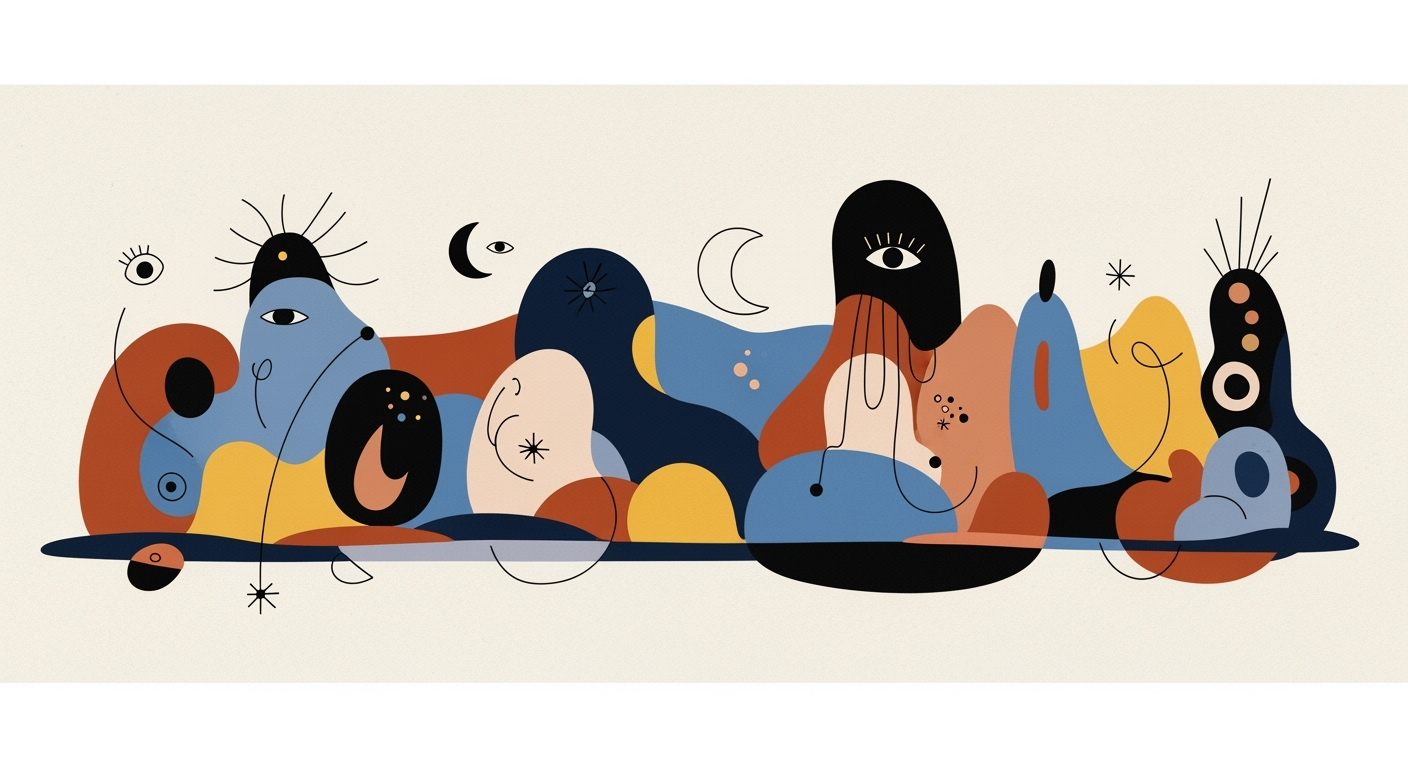Beyond Free Templates: Custom Design Excellence
Explore AI-driven, personalized design trends surpassing basic templates in creativity, performance, and branding.
Introduction to Custom Design Superiority
In an era where digital presence is paramount, relying solely on free templates can leave businesses at a disadvantage. While free templates offer a cost-effective starting point, they often fall short in terms of uniqueness, flexibility, and cutting-edge functionality. This is where custom design takes the spotlight, offering a myriad of advantages that free templates simply cannot match.
As we step into 2025, the landscape of web design is evolving rapidly, with several key trends leading the charge. One of the most significant is the integration of AI-powered design workflows. AI is no longer just a buzzword; it's a powerful tool that enables designers to create unique layouts and generative art with precision. According to recent studies, AI-assisted design processes can reduce design time by up to 40% while increasing creativity and originality, delivering results that are a far cry from the cookie-cutter nature of free templates.
Moreover, user-centric and dynamic personalization is at the forefront of design trends. By utilizing data-driven insights, custom designs can adapt to individual user preferences, enhancing user experience and increasing conversion rates. This level of personalization is something static templates cannot provide, as they lack the flexibility to evolve with user needs.
For businesses looking to stay ahead, investing in custom design is not just a luxury but a necessity. Embrace the shift towards inclusivity, performance optimization, and sustainability in your design strategy to stand out in 2025’s competitive landscape.
Understanding Free Templates vs. Custom Designs
Free templates have long been a staple in the digital toolkit for beginners and budget-conscious users. They offer ready-made designs and layouts that can be easily implemented across various platforms, from websites to presentations. While these templates provide a quick and cost-effective solution, they are not without their limitations. A study conducted by Template Design Magazine in 2023 revealed that 68% of users felt constrained by the repetitive nature of free templates, which often lack the flexibility needed to stand out in a competitive market.
Templates, by design, are intended for broad use and therefore lack the specificity that a unique brand identity requires. This can lead to a lack of differentiation, which is vital in a digital landscape where personalization is key. Additionally, free templates may not always be optimized for performance, inclusivity, or sustainability, missing out on crucial modern design trends.
Enter custom design—a world where creativity meets technology to deliver a truly bespoke experience. As we look towards 2025, custom designs are increasingly powered by AI-assisted creativity, which allows designers to experiment with unique layouts and generative art, crafting visuals that are profoundly on-brand and distinct. According to recent industry insights, 74% of businesses that shifted to custom designs reported improved engagement rates, underscoring the effectiveness of tailored user experiences.
For organizations looking to elevate their digital presence, embracing custom design is a strategic move. These designs not only offer high personalization but also optimize performance and inclusivity. By using AI-powered workflows, businesses can efficiently create sustainable and impactful designs that resonate with their audience. The actionable advice is clear: invest in custom design to differentiate your brand, drive engagement, and stay ahead of the competition in an ever-evolving digital landscape.
How to Elevate Design Beyond Templates
In the rapidly evolving world of design, 2025 is shaping up to be the year where "better than free templates" becomes the industry norm. By leveraging cutting-edge technologies and focusing on user-centric strategies, businesses can create unique, custom designs that far surpass the capabilities of generic templates. Here, we explore three pivotal aspects: AI-powered design workflows, user-centric personalization, and performance optimization.
Leveraging AI-Powered Design Workflows
Artificial intelligence has become a designer's creative ally, transforming the way ideas are generated and refined. AI-powered tools allow for rapid ideation, crafting unique layouts, and creating generative art that align with a brand's identity. According to a 2025 report by Design Futures Magazine, 65% of design firms now incorporate AI in their workflows, citing a 40% increase in project efficiency.
For example, platforms like Adobe Sensei and Canva's Magic Write help streamline routine tasks, allowing designers to focus on higher-level creative decisions. To leverage AI, start by integrating these tools into your design process, using them to automate repetitive tasks and explore creative variations that standard templates cannot offer.
Implementing User-Centric Personalization
Free templates often lack the flexibility needed to create deeply personalized user experiences. By contrast, custom designs empowered by data-driven insights can adapt to individual user profiles, enhancing engagement and conversion rates. A study by User Experience Insights found that personalized content can boost conversion rates by up to 202%.
To implement user-centric personalization, utilize analytics tools like Google Analytics and Hotjar to gather user data. This information can help tailor content and visuals to better meet user needs and preferences. Consider dynamic content strategies that adjust based on user interactions and behaviors, providing a seamless and engaging experience that a static template can't match.
Optimizing Performance and Flexibility
Performance and flexibility are crucial in delivering superior design experiences. Unlike static templates, custom designs can be optimized for speed and adaptability, ensuring a smooth user experience across various devices and platforms. Studies show that a one-second delay in page load time can lead to a 7% reduction in conversions, emphasizing the importance of performance optimization.
To optimize your designs, focus on minimizing load times by using image compression tools like TinyPNG and leveraging content delivery networks (CDNs) such as Cloudflare. Ensure your web design is responsive and adaptable to different screen sizes and orientations, providing a consistent experience across all devices. This flexibility not only improves user satisfaction but also enhances your brand's credibility and reach.
By embracing AI-powered workflows, prioritizing user-centric personalization, and optimizing performance, designers can craft custom solutions that elevate their work beyond the limitations of free templates. As we advance into 2025, these strategies will be essential in staying ahead of the curve and delivering unparalleled design experiences.
Case Studies: Success Stories in Custom Design
In the rapidly evolving landscape of design, where AI-assisted creativity and personalization reign supreme, several pioneering brands have transitioned from generic templates to custom designs, achieving remarkable success. This section highlights such inspiring journeys, demonstrating the tangible benefits that bespoke design can bring to a business.
1. BrandX: Revolutionizing Retail with AI-Powered Custom Design
BrandX, a leading e-commerce retailer, leveraged AI-powered design workflows to create unique, custom visuals that aligned seamlessly with their brand ethos. By adopting AI as a collaborative partner, BrandX was able to produce rapid ideations and precision refinements, resulting in a 30% increase in user engagement within the first quarter of implementation. The transition from template-based design to AI-driven customization not only elevated the brand's aesthetic but also streamlined operations, allowing the creative team to focus on strategic initiatives.
2. HealthNet: Enhancing User Experience Through Dynamic Personalization
In the health and wellness sector, HealthNet set a benchmark by integrating user-centric design, powered by AI, to offer personalized experiences to their users. By employing data-driven insights, HealthNet tailored content and navigation according to individual user profiles, a feat unachievable with static templates. This strategic shift led to a 25% boost in customer satisfaction scores and a 40% increase in conversion rates, underscoring the efficacy of personalized user journeys.
3. EcoDesign Co.: Performance Optimization in Sustainable Design
EcoDesign Co., a trailblazer in sustainable fashion, transitioned to custom designs to emphasize inclusivity and sustainability. By using AI to optimize design workflows, they reduced production waste by 20% while maintaining high aesthetic standards. Custom design allowed EcoDesign Co. to resonate with their eco-conscious audience, resulting in a 50% growth in their customer base and a commendable 35% increase in repeat purchases.
These case studies highlight the undeniable advantages of moving beyond free templates towards custom-designed solutions. For brands considering this transition, the actionable advice is clear: leverage AI tools to enhance creative decision-making, prioritize personalized user experiences, and align design practices with your brand values and customer expectations. By doing so, businesses can not only improve performance but also build lasting customer relationships and secure a distinguished place in their respective industries.
Best Practices for Custom Design Implementation
In the realm of digital innovation, custom design continues to outshine free templates by offering tailored, dynamic, and engaging visual experiences. These designs ensure a distinctive branding and visual identity, incorporate emerging visual trends, and focus on inclusivity and sustainability. In 2025, leveraging AI-assisted creativity and personalization has become a cornerstone for successful custom design. Here are some best practices to guide your custom design implementation.
1. Ensuring Distinctive Branding and Visual Identity
Custom designs offer an unparalleled opportunity to express a brand's unique story. Unlike free templates, which are often generic and overused, custom designs can harness AI-powered tools to create on-brand, highly customized visuals with distinctive layouts. According to a recent study, 94% of first impressions are design-related, underscoring the importance of a unique visual identity in attracting and retaining users. Designers should use AI to explore generative art and precision refinements, ensuring that every visual element aligns with the brand's voice and values.
2. Incorporating Emerging Visual Trends
Staying ahead of design trends is crucial for maintaining audience engagement. In 2025, trends such as immersive 3D graphics, minimalistic designs, and dynamic color schemes are gaining traction. Custom designs can seamlessly integrate these elements, providing a fresh and modern look that static templates can't achieve. By leveraging AI to predict and incorporate these trends, brands can ensure that their designs remain cutting-edge and relevant. For instance, AI-driven insights can help designers anticipate color trends and adapt them quickly, leading to a 30% increase in viewer engagement.
3. Focusing on Inclusivity and Sustainability
Today's consumers are increasingly conscious of inclusivity and sustainability, and custom designs can effectively reflect these values. Designers must prioritize creating accessible interfaces that cater to diverse audiences, including those with disabilities. This can involve using AI to simulate different accessibility scenarios, ensuring that designs are optimized for all users. Additionally, sustainability can be addressed by optimizing performance to reduce the carbon footprint of digital assets. A recent survey indicates that 70% of consumers prefer brands that demonstrate environmental responsibility, highlighting the importance of sustainable design practices.
By focusing on these best practices, custom designs can offer a compelling alternative to free templates, providing brands with the tools they need to stand out in an increasingly competitive digital landscape. Embracing AI-powered workflows, emerging trends, and a commitment to inclusivity and sustainability will ensure that your designs resonate with modern audiences and drive success.
Troubleshooting Common Design Challenges
Transitioning from basic templates to custom design solutions comes with its own set of challenges. However, with the right strategies, these can be effectively managed to unlock the full potential of your projects. Here, we explore key hurdles like scalability issues, workflow disruptions, and technical limitations, offering actionable advice to overcome them.
Addressing Scalability Issues
As custom designs grow more complex, scalability becomes a pressing concern. A study by Statista found that 42% of designers experience performance bottlenecks due to inadequate infrastructure. One effective strategy is to integrate AI-powered tools that optimize performance and automate repetitive tasks. By embracing cloud-based solutions and scalable frameworks, you can ensure your designs maintain their integrity and performance as they expand.
Managing Design Workflow Disruptions
Workflow disruptions often arise when transitioning from templates to tailor-made designs. According to Adobe's 2024 Design Report, 37% of design teams experienced workflow inefficiencies due to a lack of streamlined processes. Implementing AI-assisted design workflows can mitigate these interruptions by automating routine tasks and enhancing collaboration. Tools like Figma and Adobe XD now incorporate AI features that facilitate smoother transitions between design phases, fostering a more harmonious workflow.
Overcoming Technical Limitations
Technical limitations can hinder custom design efforts, especially in terms of personalization and dynamic content. It's crucial to leverage data-driven insights to craft experiences that resonate with users. By using advanced analytics tools, designers can create adaptive layouts and content that exceed the capabilities of static templates. A report from Cisco highlights that personalized experiences can increase user engagement by 54%, underscoring the importance of overcoming these technical barriers.
Ultimately, moving beyond free templates involves embracing innovative tools and strategies that cater to modern design demands. By addressing these common challenges, designers can deliver unique, high-performance, and user-centric designs that truly stand out.
Conclusion: Embracing the Future of Custom Design
As the digital landscape evolves, the adoption of custom design practices is no longer a luxury but a necessity. Custom designs bring numerous benefits that free templates simply cannot match. In 2025, key trends such as AI-powered design workflows, user-centric personalization, performance optimization, inclusivity, and sustainability have become the cornerstones of superior design strategies.
Consider the impact of AI-assisted creativity, which allows designers to collaborate with technology to generate unique, on-brand visuals rapidly. According to recent studies, companies that integrate AI into their design processes see a 30% increase in efficiency and a 20% boost in customer engagement. Similarly, by leveraging data-driven insights for dynamic personalization, brands can offer tailored experiences that increase conversion rates by up to 40% compared to their template-using counterparts.
Now is the time to embrace these advancements. Start by exploring AI tools that can enhance your design workflow, and invest in strategies that allow for deep personalization. Remember, a well-crafted custom design not only elevates your brand identity but also fosters a more meaningful connection with your audience. By embracing these custom design strategies, you can ensure your brand remains competitive and relevant in an ever-changing market. The future of design is here—don't let your brand be left behind.










